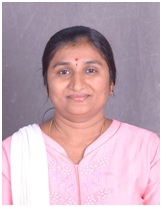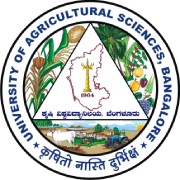
| AICRP/AINPScheme: ICAR-All India Network Project on Soil Arthropod Pests | ||||||
| Location:Department of Entomology, University of Agricultural Sciences, G.K.V.K, Bengaluru
– 560 065 |
||||||
| Year of Start:
AICRP on White grubs (1980) AINP on Soil Arthropod Pests (2000) |
||||||
Mandates:
|
||||||
| Research Programmes:
v Species profiling of major scarabs from different agro-climatic regions Light traps were used to obtain samples from different locations. Modified Robinson’s light traps with 165 W mercury vapour lamp were operated at weekly intervals from 6 pm to 6.00 am in different parts of the habitats across the state/country. The larvae of different species of white grubs were also collected from the field and reared to obtain adult beetles. Corresponding weather data pertaining to Temperature, Relative Humidity, Rainfall, etc. were also recorded and analysed with the adult activity pattern.Data were suitablyanalysed to determine species diversityand abundance. v Monitoring of soil arthropod pests in different cropping systems Survey for incidence of white grubs and other soil arthropods in various crops from different agro-ecological conditions. Abundance of soil arthropod pests and extent of damage are monitored at regular intervals throughout the year. Besides, non-arthropod pests like slugs and snails are also being recorded. v Monitoring of natural enemies of soil arthropods Sampling different crop fields at regular interval to record natural enemies associate with different life stages of white grubs in endemic areas, also soil samples were collected from different crop fields, isolated entomopathogeneic fungi, bacteria and EPNs. v Taxonomic studies on Indian Scarabaeidae Systematic collection of scarabs using various methods, faunistic studies, preparation of data-base, development of species distribution maps, bibliographic work, studying museum collection, identification service, etc., v Biogeography of major white grubs and termites Bioecologyand spatio-temporal distribution of major white grub species and termites with respect to soil type, altitude and rainfall pattern were analysed. v Management of white grubs, termites and other soil pests Ø Development of comprehensive management practices of sugarcane white grub, Holotrichiaserratain plains of Karnataka and integrated management strategies for arecanut white grubs, Leucopholis spp. in malnad and coastal Karnataka. Ø Development of IMP modules for termite management in sugarcane and other crops. Ø Development of management strategies against slugs, snails and other soil pests. |
||||||
| Research Accomplishments :
A. Taxonomic Studies on Scarabaeidae of India 1. A total of30,000 specimens of Scarabaeoidea collected, processed and are currently being retained at the centre. 2. Pictorial keys to identify the Scarabs at different levels of higher categories developed for easy identification of taxa. 3. Check list of subfamily Melolonthinae of India developed that lists 992 species from the Indian Subcontinent including 532 species from Political India. 4. Developed spatial distributional maps for major white grubs and termites in India.
B. Monitoring of Soil Arthropods Studied the bio-geography of major white grubs of Karnataka. Holotrichia serrata is a polyphagous white grub species distributed throughout the peninsula and in a few northern Indian states. The grub feeds on roots of cultivated crops for 6 to 8 months leading to significant economic losses to farmers. H. serrata found all over the Karnataka state, is severe on sugarcane in Bagalakote, Belagavi, Bengaluru, Chamarajanagar, Davanagere Hassan, Kolar, Mandya, Mysuru, Raichur and Tumkur districts. Apart from sugarcane it is a serious pest of vegetables, pulses, cereals and millets. This species also causes severe economic loss to groundnut in the south India.
Three species ofLeucopholisDejeanviz., Leucopholislepidophora Blanchard, L. burmeisteriBrenske and L. coneophoraBurmeister, are three important species of white grubs that cause significant economic losses to arecanut farmers in the high rainfall areas of Karnataka. Along the coastal area and the Western Ghats an estimated 1,86,000 hectares of arecanut is being cultivated and approximately 20 % of these farms suffer from white grub problem and in each farm irrespective of the size of the farm about 50 % of the area is significantly affected by white grubs. Thus in all about 10 % of the area under cultivation of arecanut along the coastal area and the Western Ghats suffers from white grub problem. Besides, adult beetles of species belonging to the genera Anomala, MaladeraAdoretus, Schizonychaand Popillia damages flowers of rose, pigeonpea etc., C. Management of white grubs 1. Developed comprehensive management practices of sugarcane and groundnut white grub, H.serratain plains of Karnataka. 2. Developed a weather based adult beetle-emergence-prediction model for H.serrata. 3. Developed a three pronged integrated management strategies for arecanut white grubs, Leucopholis spp. in malnad and coastal Karnataka. 4. Isolated a native entomopathogenic fungus, Beauveriabrongniartii. 5. Integrated management of Giant African snail, Lissachatinafulica(Bowdich, 1822). 6. A comprehensive technology for the management of Crazy ant, Anoplolepislongipes. |
||||||
| Awards / Recognitions:
Best Oral PresentationCertificate has been awarded during 5th National Symposium on Plant Protection in Horticulture: Challenges and a Roadmap Ahead held at IIHR, Bengaluru from 27-29 December 2021. |
||||||
| Facilities Available:
v The centre currently houses approximately 30,000 specimens of Scarabaeidae belonging to six subfamilies, representing 70 genera and 120 species. This is the 3rd largest collection of scarabs in the country by extent of diversity. v A green-house for maintenance of white grubs/soil arthropods. v Aunit for mass production of entomopathogenic fungus, Beauveriabrongniartii. v A molecular lab. v Microscopes and other laboratory instruments. |
||||||
| Other Activities:
Dissemination of technologies · As part of transfer of technology various extension activities such as conducting training programes, farmers’ meet, demonstrations, exhibitions, field visits, participation in mass media etc., carried out at regular intervals. · Implementation of Tribal Sub Plan (TSP). |
||||||
| Externally Funded Projects in Operation: | ||||||
| No. | Project Title | Co-Principal Investigator | Funding agency | Year of Start | Year of Completion | Significant Outcome |
| 1 | Mass production and popularization of Entomopathogenic Nematodes for the Management of Sugarcane White grubs. No.C/S-8GOK (Adhoc) 2015 | K. V. Prakash | GOK | 2015 | 2017 | EPNs belong to families Steinernematidae and Heterorhabditidae were isolated.
EPNs successfullymass produced under In vitro conditions on four artificial media such as 1.chickpea media, 2.chicken offal media, 3.chicken powder media, 4. Dog biscuit media. EPNs found effective against the III instar larvae of H.serrata and L.lepidophora. |
| 2 | Survey, Identification, Development and Utilization of PaenibacilluspopilliaeDutky for the Management of Arecanut White grubs in Karnataka DR/GOI-331/2013-14 dated 17-10-2015 | K. V. Prakash | DBT, GOI | 2014-15 | 2017-18 | As many as 16 local isolates have been collected from the field infected grubs. The bacterium could be successfully cultured on an artificial medium with proline, charcoal and an antifoaming agent such as pig fat as the important components. An average of 2.9 to 4.2 X 107 sporangia per ml could be produced on this medium. Further, the sporangia produced by in vitro method when tested for their infectivity against the III instar larvae of H. serrata and L. lepidophora, could cause milky white disease in both these species. |
Staff Profile:
Scientific staff:

Academic Qualification M.Sc. (Agri.), PhD in Agril. Entomology
Area of Specialization Integrated Pest Management
Date of joining duty at UAS, Bangalore 17-11-1998
Date of Joining Scheme /Unit 03-02-2018
rajannadent@gmail.com
9108562289
Technical staff

Academic Qualification M.Sc. (Agri.), PhD in Agril. Entomology
Area of Specialization Systematics and insect population biology
Date of joining duty at UAS, Bangalore 24-03-2006
Date of Joining Scheme/Unit 16-07-2009
kvprakash@uasbangalore.edu.in
kvpento@gmail.com
9448997061
Supporting staff

Academic Qualification M.Sc. (Agril. Entomology)
Date of joining duty at UAS, Bangalore 04-02-2008
Date of Joining Scheme/Unit 08-06-2020

Academic Qualification M.Sc. (Agri.), PhD in Agril. Microbiology
Date of joining duty at UAS, Bangalore 06-09-2022
Date of Joining Scheme/Unit 06-09-2022
-
- Page Visitors Count:
- Last Updated: March 19, 2025
- Site Statistics




